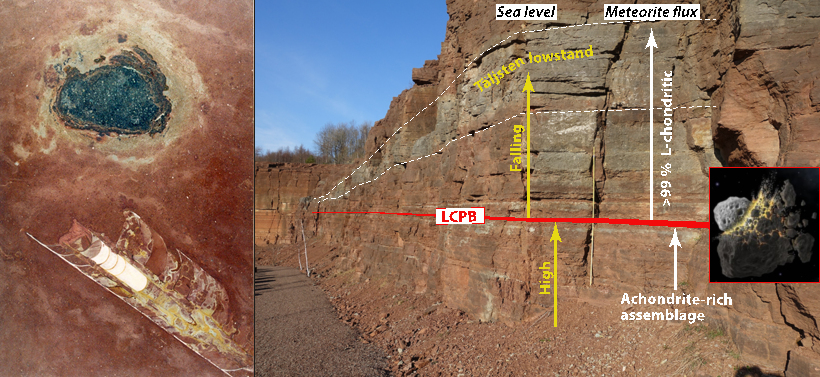报告题目:The largest collision in late solar system history and its effects on climate and life on Earth: The breakup of the L-chondrite asteroid 470 Myr ago
报告人:Birger Schmitz 教授
报告人单位:Department of Physics, Lund University
时间:2023年11月17日(周五)下午02:30
报告地点:南京古生物所图书馆三楼报告厅
主办:科技处、国家重点实验室、青促会、人教处
报告人简介:
Prof. Birger Schmitz is professor of Geology at Lund University, focused on the crossdisciplinary research mainly about reonstructing the history of the solar system by studies of Earth's sedimentary record. Up to now, he has published more than 200 scientific articles and edited volumes on accretion of extraterrestrial matter on Earth as well as on the warm climates of the early Paleogene.

报告简介:
The most common type of meteorite that falls on Earth today, the L chondrites, originate from the largest documented collision in the solar system the past 3 billion years. This collision happened in the asteroid belt during the Ordovician period when the circa 150 km large parent body of the L chondrites was hit by another object, possibly a comet. As the parent body broke up the solar system was filled with dust from the collision.
The signature of this event can be studied in Earth's sedimentary record. More than 130 fossil L-chondritic meteorites, 1-21 cm large, have been recovered during quarrying of Ordovician limestone in southern Sweden. From Earth's record of impact craters we see that a shower of asteroids, 0.1-1 km large, hit Earth during the 30 Myr after the breakup event. In mid-Ordovician strata in Baltoscandia the precise level corresponding to the breakup event has been located by extraterrestrial relict minerals, mainly chromite, representing abundant micrometeorites that reached Earth after the collision. The flux of extraterrestrial dust to Earth increased by at least two orders of magnitude. The dust kept some sunlight out, leading to cooling and an ice age, as evidenced by the onset of an eustatic sea-level fall.
The Yangtze Platform contains the world's best Ordovician strata to study the effects of this asteroid breakup. We have located the stratigraphic level corresponding to the breakup event in the Kuniatan Formation in the Puxi River section near Yichang. We now plan studies of the Shihtzupu Formation to get a better idea of sea-level changes after the asteroid breakup.

Left: A fossil meteorite and orthoceratite shell in Ordovician limestone plate from Sweden.
Right: Darriwilian strata at Kinnekulle, Sweden, with the time of the asteroid breakup and sea-level fall marked
附件下载:
